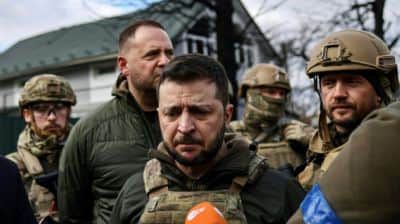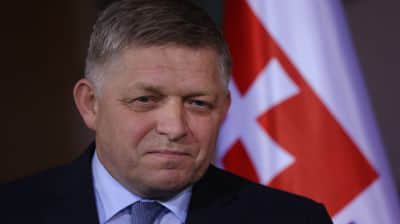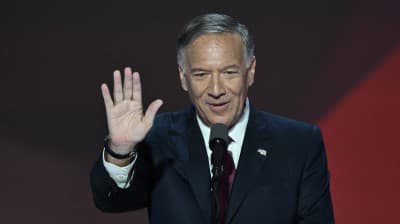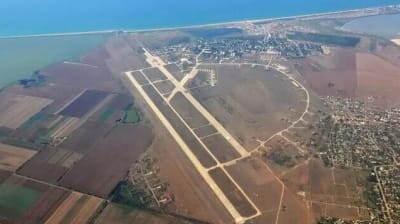US and the West insisted on Ukraine's targeted counteroffensive to cut off Russia from Crimea – The Washington Post
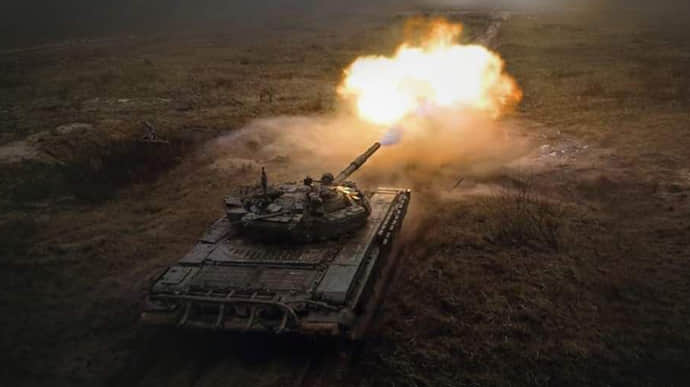
The Washington Post has provided an analysis of the preparations for the Ukrainian counteroffensive. It details the distinctions between the Ukrainian strategy and the perspectives of the US and the West. Although Ukraine’s Commander-in-Chief Valerii Zaluzhnyi insisted on operations along the entire front line, the United States and the West were leaning toward a surgical counterattack, specifically to cut off Russia from occupied Crimea.
Source: The Washington Post
Quote: "On 15 June, in a conference room at NATO headquarters in Brussels, Defense Secretary Lloyd Austin, flanked by top US commanders, sat around a table with his Ukrainian counterpart, who was joined by aides from Kyiv. The room was heavy with an air of frustration.
Austin, in his deliberate baritone, asked Ukrainian Defence Minister Oleksii Reznikov about Ukraine’s decision-making in the opening days of its long-awaited counteroffensive, pressing him on why his forces weren’t using Western-supplied mine-clearing equipment to enable a larger, mechanised assault, or using smoke to conceal their advances. Despite Russia’s thick defensive lines, Austin said, the Kremlin’s troops weren’t invincible."
According to Reznikov, military leaders in Ukraine made these choices. However, he pointed out that every time the Ukrainian armoured vehicles tried to advance, they were annihilated by Russian artillery, drones, and helicopters.
"Without air support, he said, the only option was to use artillery to shell Russian lines, dismount from the targeted vehicles and proceed on foot."
Details: After speaking with over thirty senior officials from Ukraine, the US, and Europe, the outlet released its analysis of the Ukrainian counteroffensive.
Two sections make up the analysis. The report's second section discusses the conflict between Washington and Kyiv as well as the battle that was fought on the ground in the summer and fall. Certain officials discussed sensitive matters while maintaining their anonymity.
It is being noted that as winter drew near and the front line freezes, Ukraine's top military leaders realised that the war was coming to a halt.
The Ukrainian, American, and UK militaries conducted eight significant tabletop war games to create an offensive strategy.
However, it should be noted that Washington underestimated the extent to which Ukrainian troops could quickly be trained to become combat forces in the Western tradition, particularly in the absence of air support for Kyiv.
In order to stop Russia from further solidifying its position, the Pentagon intended for the offensive to start in the middle of April. The Ukrainians paused, adamant that they needed more training and weapons before they were prepared.
With the troops and weapons that Ukraine possessed, the US military was confident that a mechanised frontal attack on the Russian front line was feasible. Further modelling indicated that, at most, Kyiv's forces could reach the Sea of Azov and cut off Russian troops in the south in 60–90 days.
It was along this southern axis that the United States promoted a concentrated offensive. According to US intelligence, there was a 50/50 chance that the offensive would succeed.
It is reported that currently morale in Ukraine is weakening, and international attention has shifted to the Middle East.
In almost every sector of the front, expectations and results diverged: "Together, all these factors make victory for Ukraine far less likely than years of war and destruction."
During a late fall 2022 conference call, after Kyiv had retaken territories to the north and south, Austin spoke with General Valerii Zaluzhnyi, the Commander-in-Chief of the Armed Forces, and asked him what he would need for a spring offensive.
Zaluzhnyi replied that he needed 1,000 armoured vehicles and nine new brigades prepared in Germany and ready for battle.
Austin responded that it was nearly impossible, according to an official with knowledge of the conversation.
According to Western officials, Ukraine should have focused its forces on a single strategic objective: launching a massive assault through Russian-held territory to the Sea of Azov, thereby severing the Kremlin's land route from Russia to Crimea.
The US was certain that this would not succeed.
The most optimistic scenario gave Ukraine between sixty and ninety days to block the land bridge. There was also a fierce and bloody battle during the drills, with between 30% and 40% of the soldiers and equipment lost.
US military officers saw that casualties were far less than anticipated during major battles in Iraq and Afghanistan.
US officials also believe more Ukrainian troops will eventually die if Kyiv fails to mount a decisive offensive and the conflict turns into a protracted war of attrition.
War-gaming, according to a senior Ukrainian military official, "doesn’t work." The war being fought by Ukrainian soldiers is unlike any other that NATO forces have encountered. It is a major conventional conflict without the air superiority that the US military has enjoyed in every modern conflict it has been involved in. World War I-style trenches are being blocked by ubiquitous drones and other futuristic tools.
There are also different views between the United States and Ukraine on holding Bakhmut, where Ukrainian forces have long maintained a significant presence: "Zaluzhnyi maintained more forces near Bakhmut than he did in the south, including the country’s most experienced units, US officials observed with frustration."
A senior UK official claimed that Zaluzhnyi intended to cause Russia trouble due to the front's enormous length. The Ukrainian general sought to reduce the fighting strength of the considerably larger Russian occupation forces, who were not familiar with the terrain and were already having issues with morale and logistics.
Western officials saw problems with this approach. Western military doctrine dictated a concentrated push.
However, the Americans and the West gave way. One senior US official said: "They know the terrain. It’s not our war. And we had to kind of sit back into that."
In February, Jake Sullivan, President Biden's national security adviser, convened the administration's top national security officials to review the counteroffensive plan.
Sullivan wondered if Washington and its partners could successfully prepare Ukraine to break through Russia's heavily fortified defenses.
Milley then showed the potential directions of attack and deployment of Ukrainian and Russian forces. He and Austin explained their conclusion by saying that "Ukraine, to be successful, needed to fight a different way." This was told by one senior US administration official who was directly involved in the planning.
The United States and the West were concerned that the counteroffensive did not begin in May, which allowed the Russians to build an extensive line of defense.
At the same time, frustration of a different kind was growing in Ukraine. A former senior Ukrainian official said the operation was planned to begin in May, but "many things happened."
In particular, the promised equipment was delivered late or arrived unsuitable for warfare.
American officials strongly denied that the Ukrainians had not received all the weapons they had been promised.
The Americans admitted that the list of wishes from Ukraine could be much larger, but by the beginning of the offensive, they received about two dozen Mine Clearing Line Charge launchers (MCLCs), more than 40 mine rollers and excavators, 1,000 Bangalore torpedoes, and more than 80,000 smoke grenades. Zaluzhnyi had requested 1,000 armoured vehicles; the Pentagon ultimately delivered 1,500.
In April, at a meeting at Ramstein Air Base in Germany, Zaluzhnyi's deputy, Mykhailo Zabrodskyi, emotionally turned to Austin and those present: "We’re sorry, but some of the vehicles we received are unfit for combat… Bradleys and Leopards had broken or missing tracks. German Marder fighting vehicles lacked radio sets; they were nothing more than iron boxes with tracks."
Austin looked at the two men seated beside him: Lieutenant General Antonio Aguto, who led the Security Assistance Group-Ukraine, and General Christopher Cavoli, the senior US commander for Europe. They promised to check it.
The Pentagon concluded that Ukrainian forces failed to properly handle all equipment after receiving it. Austin instructed Aguto to work more intensively with Ukrainian colleagues in terms of maintenance.
Early in June, the counteroffensive finally got underway. While some Ukrainian units made quick progress, retaking villages in Zaporizhzhia Oblast south of Velyka Novosilka, in other areas Ukrainian forces were not fully protected from Russian firepower, even with the use of Western weapons and training.
Support UP or become our patron!
